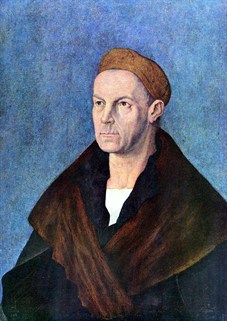The Függers
 The German Függer family were the real rulers of the European banking system between the fifteenth and sixteenth centuries. Originally from Augsburg, they amassed great wealth thanks to textile production, commerce, mining and the steel industry, which enabled them to secure huge loans of money to popes, kings, emperors and other princes of Europe, such as the Medici. However, the Függer tied their fortunes mainly to the Habsburgs, in particular thanks to the skill and mastery in the affairs of Jakob Függer, called “the rich” (1459-1525). They turned the family interests towards more profitable sectors, compared to the textile industry, such as the extraction and sale of metals in Central Europe, the spice trade, and especially loans to European sovereigns. Jakob Függer was the banker of the popes, he financed the establishment of the Pontifical Swiss Guard and especially contributed in a decisive way, thanks to his money, to the election of Charles V as emperor. In 1524, Jakob and his family lost their management of the Roman mint and the monopoly on the minting of Pontifical currency. Although never reaching the wealth and power which they attained during the period of Jakob Függer, they were among the major players in the international credit system until 1657, becoming, at the same time, a noble dynasty which branched out and was repeatedly awarded public and ecclesiastical offices. The three dynastic lines of the family still exist: the Függer von Kirchberg and Weißenhorn, the Függer von Glött and the Függer-Babenhausen.
The German Függer family were the real rulers of the European banking system between the fifteenth and sixteenth centuries. Originally from Augsburg, they amassed great wealth thanks to textile production, commerce, mining and the steel industry, which enabled them to secure huge loans of money to popes, kings, emperors and other princes of Europe, such as the Medici. However, the Függer tied their fortunes mainly to the Habsburgs, in particular thanks to the skill and mastery in the affairs of Jakob Függer, called “the rich” (1459-1525). They turned the family interests towards more profitable sectors, compared to the textile industry, such as the extraction and sale of metals in Central Europe, the spice trade, and especially loans to European sovereigns. Jakob Függer was the banker of the popes, he financed the establishment of the Pontifical Swiss Guard and especially contributed in a decisive way, thanks to his money, to the election of Charles V as emperor. In 1524, Jakob and his family lost their management of the Roman mint and the monopoly on the minting of Pontifical currency. Although never reaching the wealth and power which they attained during the period of Jakob Függer, they were among the major players in the international credit system until 1657, becoming, at the same time, a noble dynasty which branched out and was repeatedly awarded public and ecclesiastical offices. The three dynastic lines of the family still exist: the Függer von Kirchberg and Weißenhorn, the Függer von Glött and the Függer-Babenhausen.
Read more :
- E. Hering, Die Fugger, Leipzig 1939.
- G. Pölnitz, Die Fugger, Frankfurt 1960.
- M. Häberlein, The Fuggers of Augsburg: Pursuing Wealth and Honor in Renaissance Germany, University of Virginia Press 2012.
